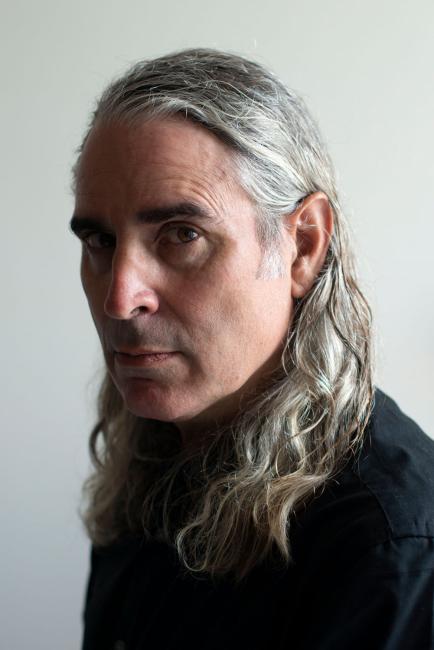
Arriving at Guantánamo
For the next four days, Louie Palu will be blogging for us from the Guantánamo Bay Naval Station. Four days is the limit imposed on all press visits to the detention facility at the American base—a day of arrival, two days of taking pictures, and a day of departure. All photos are reviewed by a US military official before transmission.—Ed.

A bench outside the airfield at the Guantánamo Bay Naval Station. The US Government continues to hold approximately 340 ‘enemy combatants’ here. (Louie Palu / ZUMA Press)
Leaving the foggy skies over the United States behind, the airplane soars higher and the Florida coastline recedes in the distance. When I travel from Washington to Florida to catch a special charter to Cuba, passengers often ask, “Are you going on vacation?” I smile and explain that, no, I am going to Guantánamo. I am always greeted with stunned looks, but why is anyone surprised anymore? The prison has been there for more than eight years and is a regular fixture in the news. On January 22 of last year, newly inaugurated President Obama signed an executive order requiring the closing of the detention facility at Guantánamo within the year. And yet, fourteen months later, the facility remains open, and Obama’s senior adviser David Axelrod told CNN just today that the administration doesn’t know when it may actually close. “I believe we’re going to get there,” he said, “but it’s complicated.” Guantánamo seems to have become one of the most lasting legacies of the post-9/11 world and an issue as divisive and taxing to the Obama administration as the ongoing wars in Iraq and Afghanistan.
Flying toward Cuba, small islands appear through the clouds surrounded by the bright blue Gulf. This is my fourth trip to the island base on one of the media tours organized by the US Department of Defense. So I know the ropes. The first time I traveled here I imagined I was flying to a mysterious, misty island—like something out of King Kong. I know better now. I know the charter flight out of Ft. Lauderdale is a small prop airplane and has no bathroom, so I don’t drink anything for hours before boarding. I’ve heard that one lawyer, in desperation, had to pee in a bottle, so I always pack one in my camera bag just in case. I know, too, that the deafening roar of the propellers can leave you with a hum in your ears, so I always pack earplugs.
When we land, I duck my head through the plane exit and am immediately smacked by the Cuban heat. The Public Affairs Officers (PAOs) greet us and take us to our accommodations, then they brief us on the rules for photographing in the detention center. You can photograph this. You can’t photograph that. Every day your pictures will be reviewed for operational security. If the images don’t meet the guidelines, they will be deleted.
With so many restrictions, you have to look for the surprises. Each small detail here can make or break a picture. (Perhaps the most surprising thing I saw on my first trip was the sign above the bench at the airfield: DO NOT FEED THE IGUANAS.) And getting the best shot is that much harder, because there are other photographers on the tour. I imagine, as usual, we will be vying for angles, positions and inches, which can make a difference when shooting through cell doors and windows. But we all know the deal; everyone on this tour is a veteran of Guantánamo.
We are on the base tonight—a night to mentally prepare. Tomorrow we go into the camps. Tomorrow we tour the detention center.

